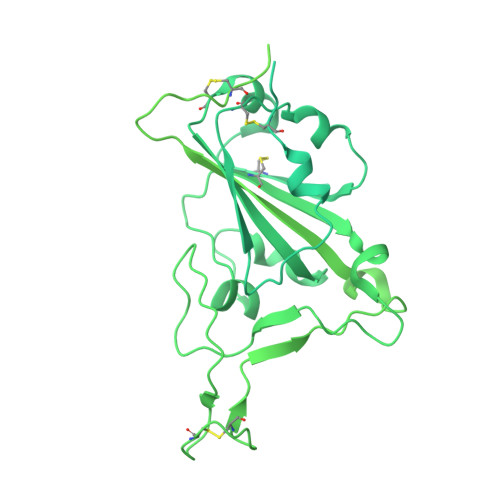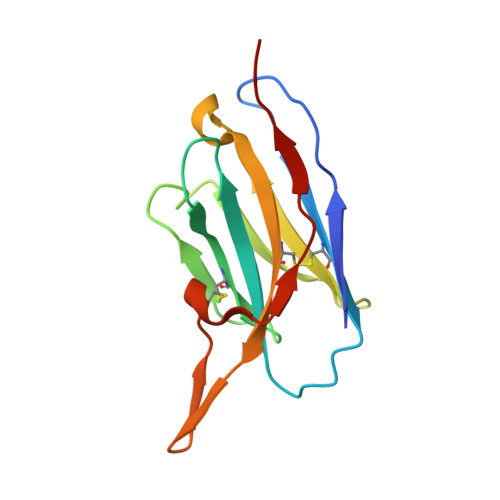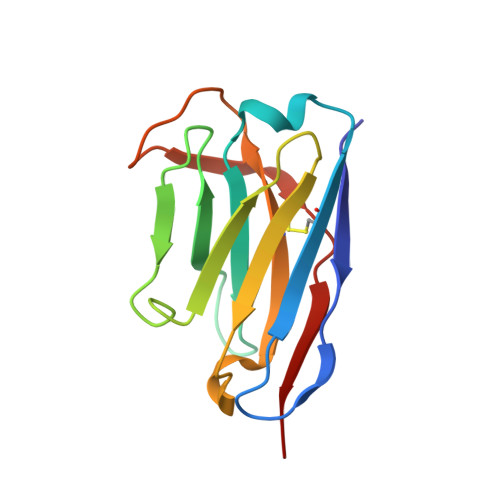Nanobody cocktails potently neutralize SARS-CoV-2 D614G N501Y variant and protect mice.
Pymm, P., Adair, A., Chan, L.J., Cooney, J.P., Mordant, F.L., Allison, C.C., Lopez, E., Haycroft, E.R., O'Neill, M.T., Tan, L.L., Dietrich, M.H., Drew, D., Doerflinger, M., Dengler, M.A., Scott, N.E., Wheatley, A.K., Gherardin, N.A., Venugopal, H., Cromer, D., Davenport, M.P., Pickering, R., Godfrey, D.I., Purcell, D.F.J., Kent, S.J., Chung, A.W., Subbarao, K., Pellegrini, M., Glukhova, A., Tham, W.H.(2021) Proc Natl Acad Sci U S A 118
- PubMed: 33893175
- DOI: https://doi.org/10.1073/pnas.2101918118
- Primary Citation of Related Structures:
7LX5 - PubMed Abstract:
Neutralizing antibodies are important for immunity against SARS-CoV-2 and as therapeutics for the prevention and treatment of COVID-19. Here, we identified high-affinity nanobodies from alpacas immunized with coronavirus spike and receptor-binding domains (RBD) that disrupted RBD engagement with the human receptor angiotensin-converting enzyme 2 (ACE2) and potently neutralized SARS-CoV-2. Epitope mapping, X-ray crystallography, and cryo-electron microscopy revealed two distinct antigenic sites and showed two neutralizing nanobodies from different epitope classes bound simultaneously to the spike trimer. Nanobody-Fc fusions of the four most potent nanobodies blocked ACE2 engagement with RBD variants present in human populations and potently neutralized both wild-type SARS-CoV-2 and the N501Y D614G variant at concentrations as low as 0.1 nM. Prophylactic administration of either single nanobody-Fc or as mixtures reduced viral loads by up to 10 4 -fold in mice infected with the N501Y D614G SARS-CoV-2 virus. These results suggest a role for nanobody-Fc fusions as prophylactic agents against SARS-CoV-2.
Organizational Affiliation:
Infectious Diseases and Immune Defences Division, The Walter and Eliza Hall Institute of Medical Research, Parkville, VIC 3052, Australia.
















